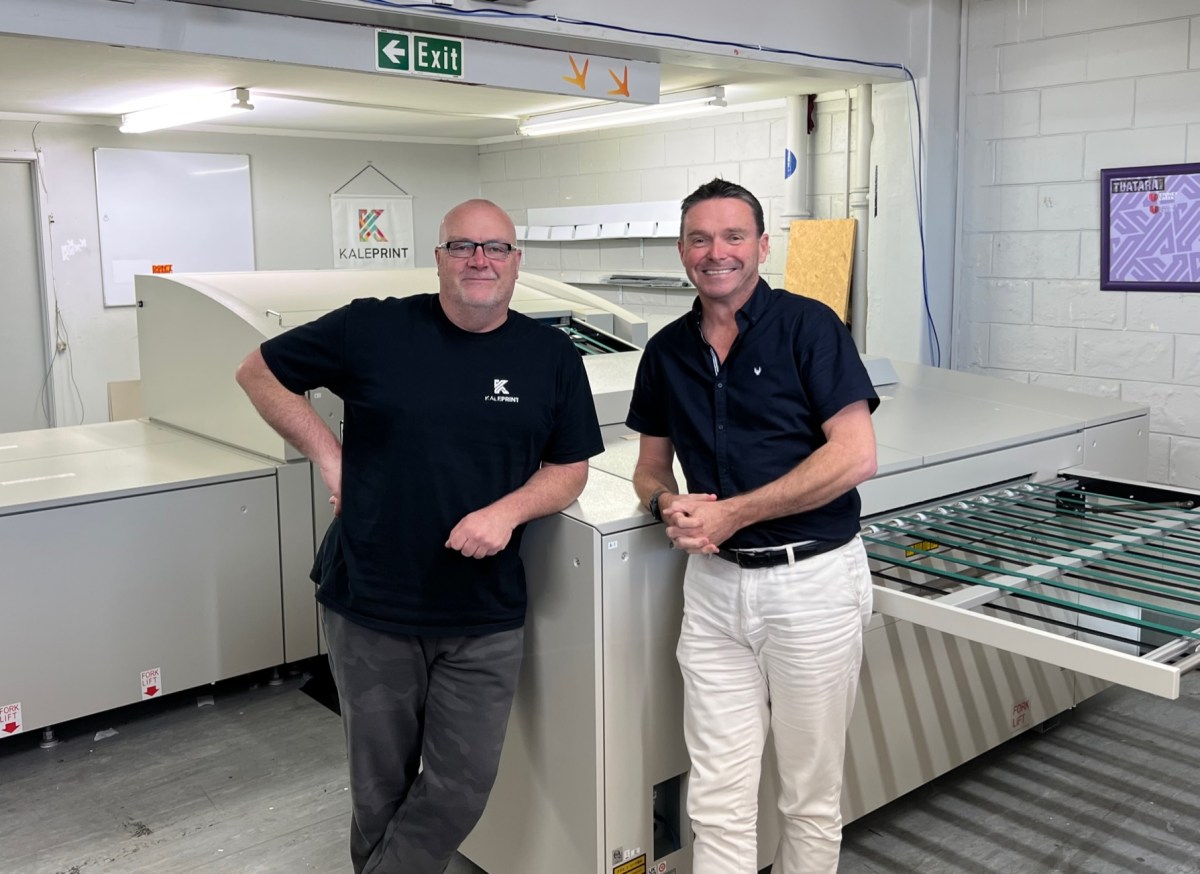Tauranga-based Kale Print offers a comprehensive range of printing products and services. The Bay of Plenty’s largest commercial print company has a well-deserved reputation for producing quality print on time.
Part of its success lies in its willingness to invest in the best technology available to help Kale Print in delivering to its broad customer base.
Recently, Kale Print installed a Screen PlateRite PTR8600NII-S eight-page thermal CTP, supplied through Fujifilm New Zealand.
Peter Lloyd, general manager at Kale Print sees the Screen PlateRite PTR8600NII-S helping the company with its production. He says, “The Screen PlateRite PTR8600NII-S will provide improved reliability, quality, and productivity with its capacity to process up to 32 plates per hour.”
Speed and versatility
Kale Print’s investment demonstrates the ongoing profitability of offset printing for companies prepared to roll up their sleeves and get stuck in. With a five-colour Komori press and the country’s first RMGT 920ST-4 LED-UV press, Kale Print needed a versatile CTP that could keep these presses fed.
Part of the equation is its ability to handle 32 plates per hour speed. It is equipped with high-output fibre laser diode exposure heads. These heads work with proprietary clamp technologies and an auto-balance mechanism to enable stable, high-speed exposure.
Another factor is the Screen PlateRite PTR8600NII-S’s capability to handle diverse plate sizes on any press. Plate sizes range from a minimum of 304mm x 370mm up to 1,160mm x 940mm.
Loading options
Screen offers two options for automatic plate loading. The MA-L8900 multi-cassette autoloader comes standard with three plate cassettes (up to five as an option) and full automation of both plate supply and cassette switching. Each cassette holds up to 120 plates for a maximum of 600 plates stored in the autoloader. Even if different plate sizes are loaded into separate cassettes, the autoloader flexibly switches between the cassettes as required.
The SA-L8900 single-cassette autoloader features a single cassette that holds up to 120 plates, as well as automatic detection and removal of interleaf paper. Its transport system only contacts the rear side of a plate, preventing damage to the sensitive emulsion side.
Peter adds, “The Screen PlateRite PTR8600NII-S helps us to create capacity for future growth. We have seen significant year on year sales growth in the A2 and A1 offset print category. Clients love the print quality and fast turnarounds produced by the Komori and Ryobi presses that both have HUV instant drying. One of the fastest growing sectors is our print for other trade partners.”
Greener printing
Screen has worked to make its latest CTP solutions gentler on the environment, assessing the environmental impact of all its products as a form of design review. The company says it has developed the PlateRite 8600N series with the goals of minimising energy use and environmental impact while maximising safety.
It offers these features:
Energy use during operation reduced by up to 60 per cent.
A power-saving mode allows energy savings during idling.
Energy use during standby reduced
by up to 73 per cent, when using power-saving mode.
All models are compatible with chemical-less plates from a range
of manufacturers.
The use of a registration punch-less system cuts running costs.
In addition, Fujifilm’s new Superia ZX processless plate offers fast on press development, higher durability, robust scratch-resistance and better visibility thanks to several new and innovative technologies. Fujifilm calls it “strong, robust with excellent image visibility”.
Peter adds, “This supports our carbon reduction goals, especially our Toitū carbon reduce programme through lower energy use. In addition, the Screen PlateRite PTR8600NII-S uses no chemicals in plate production. It is better for the environment and our operators.”
Stephen Hodson, director and general manager of Fujifilm New Zealand, says, “We are pleased to partner with Kale Print in bringing the new Screen PlateRite PTR8600NII-S to the market. Its speed, quality, and environmental features
mark it as a vital tool in today’s offset press rooms.”


